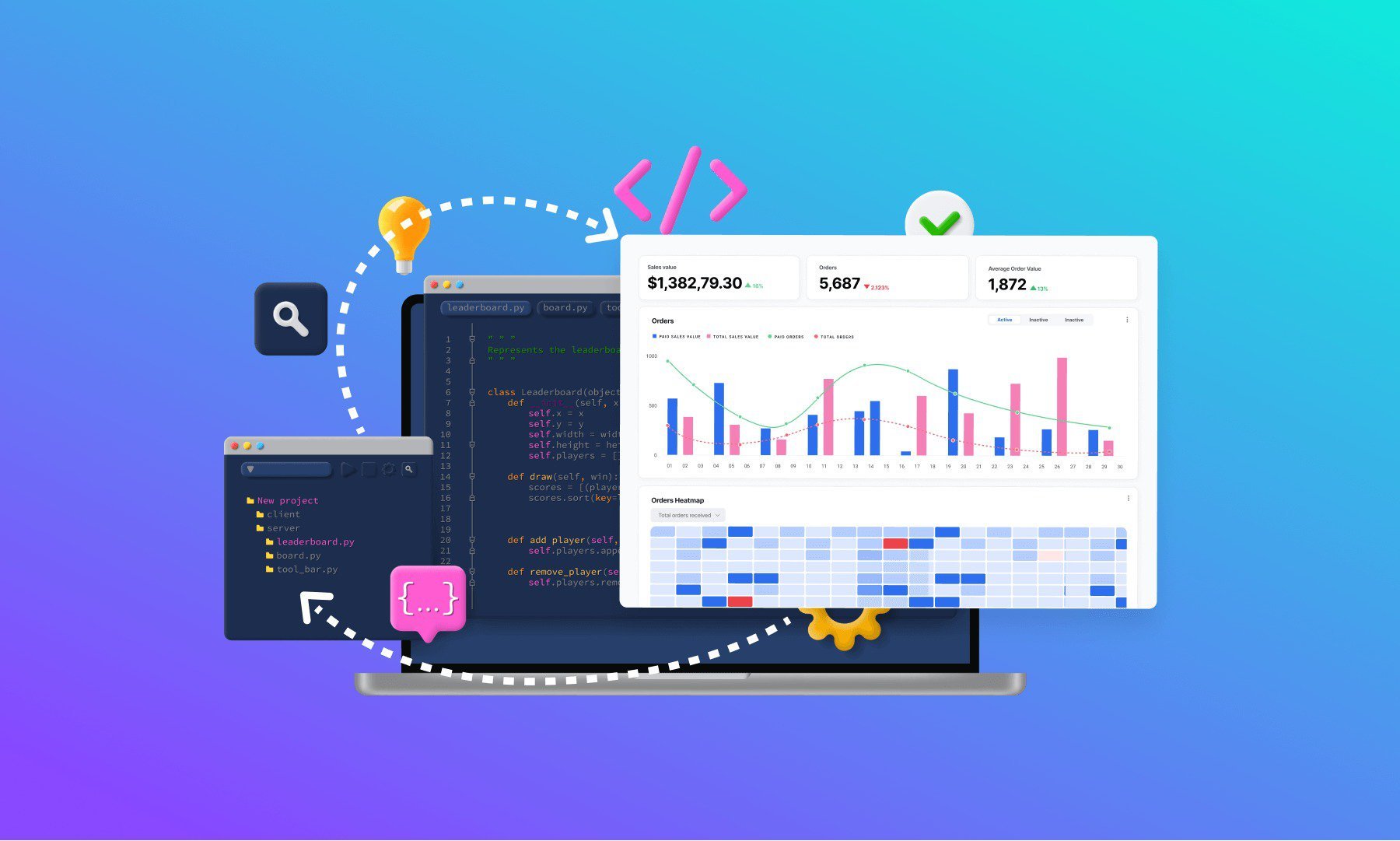Customer experience is critical for the success of any eCommerce business. It refers to the overall impression that a customer has of a brand, based on their interactions with that brand throughout the customer journey, from pre-purchase research to post-purchase support.
Optimized customer support is a key driver of a positive customer experience in eCommerce—without the physical element of the shopping experience, customers rely more heavily on the information and support provided by the eCommerce store. So it’s vital that eCommerce brands are providing customers with the support they need, when they need it, in a manner that is convenient and easy to use. In today’s connected world, optimizing your systems through an eCommerce API integration is becoming increasingly important to achieve this.
TL;DR
- A fully integrated eCommerce helpdesk solution offers several benefits for customer support, such as automated data sharing and a single source of truth for eCommerce data.
- eDesk’s eCommerce API allows for automated customer support actions and communication between eDesk and other systems not yet available for native integration within the app store
- Four actionable use cases for eDesk’s eCommerce API include automating order tracking, automating ‘Return Request Package Received’ emails, reducing friction with contextual information, and centralizing order information from external OMS.
What is an eCommerce API?
An API (Application Programming Interface) is a method that enables two disparate systems/applications/programs to talk to each other safely and securely. By utilizing an eCommerce helpdesk API, your team can retrieve data, update information, and streamline communication channels for a fully integrated eCommerce experience.
Enhancing CX with fully integrated eCommerce customer support
A fully integrated eCommerce help desk solution offers several benefits that facilitate seamless communication and integration between your eCommerce tech stack in real-time to drive CX.
One significant advantage of a fully integrated eCommerce help desk is the automated data sharing between your integrated systems, enhancing context for your support agents for faster resolution times and better quality solutions. This data-sharing feature allows your support team to access the necessary information to provide the best customer experience.
Moreover, a fully integrated eCommerce help desk brings your eCommerce data into one single source of truth within your platform, eliminating data silos. This eradicates the need for accessing multiple disconnected systems to retrieve required data, resulting in more efficient workflows and reducing the time and resources needed to access information—so your support agents can focus on the customer and their query without distraction or confusion.
How to supercharge your customer support with eDesk’s eCommerce API
Our API allows applications not natively available in our app store—whether they are custom-built or eCommerce B2B systems—to communicate with eDesk and vice versa. Complete
Leverage our API to automate customer support actions such as creating new tickets, updating existing tickets, requesting ticket or order information, and much more. Streamline communication and ensure accurate data flow between eDesk and your other systems.
Check out 4 actionable use cases for eDesk’s eCommerce API that could supercharge your customer support operations and build a customer experience that leads to increased loyalty, higher conversion rates, and improved brand reputation.
Note: API calls can be quite complex to set up and would require some technical background. If you’re not comfortable with it, it might be best to ask your IT team for help.
1. Automate Updated Order Tracking in eDesk
According to the Global eCommerce Consumer Research Report, 94.5% of shoppers say the ability to track their orders is important. So when it comes to providing an exceptional post-purchase experience, ensuring your support agents have real-time access to accurate tracking data should be a top priority.
Let’s say you’re looking to upload your tracking numbers into eDesk. You currently use a third-party shipping service called BillyBobs Shipment Co., which eDesk doesn’t yet support within the app store. So, what can you do? The good news is BillyBobs offers an eCommerce API which includes tracking information.
With eDesk’s eCommerce API, you can create a script which will do the following:
- Connect to the eDesk API and using the ‘List Orders call, it will grab all orders in the past week which have been dispatched.
- From this list, the script will filter out any orders which have a tracking number set.
- The script will then connect to BillyBobs’ API, making a call to get the tracking details for each of these orders.
- Finally, it connects back to the eDesk API and uses the ‘Upload Tracking Information’ call to update the tracking details in eDesk.
2. Automate ‘Return Request Package Received’ emails
20% of online orders are returned, compared to just 9% of orders bought in-store. As demand for online returns increases, it’s critical that customer support teams are equipped to process these requests in a timely manner.
Let’s say you have an internal inventory system for your Amazon business. When a customer returns a product, you receive the package and scan a barcode to update the order in your system. However, at this point, one of your support agents would need to manually check the packages and email the customer to confirm the package has been received, which is not very efficient. Moreover, it requires technical know-how to access the database.
To address this issue, you can use eDesk’s API to create a script that automates the following tasks:
- Connects to your database and downloads details of any parcels that have been scanned today.
- Connects to the eDesk API and creates a new ticket thread using the ‘Create Thread’ call.
- Connects to the eDesk API and then creates a new message within that new ticket thread using the ‘Create Message’ call.
- The customer support team can then work through these new tickets and manually refund the payments on Amazon
- Now the Support Team can focus on what’s important: customer conversations!
3. Reduce friction with contextual information
In the world of customer service, context is crucial for reducing friction. Today’s customers demand prompt solutions to their issues and rely on online support teams to quickly access the information needed to achieve this. Have you ever had a customer ask, “Why is it taking so long?” while your support team scrambled to gather the necessary details to address their inquiry? This underscores the importance of context in ensuring smooth, efficient customer service.
One way to integrate contextual information into your customer service is by using eDesk’s API. With this API, you can integrate external ERP systems’ contextual information, such as order IDs, order status, and return information, into existing orders within eDesk. This creates a single source of truth for all order-related information.
Here’s how it works,
- Connect to the eDesk API and use the ‘List Order’s call to grab orders in eDesk.
- From this list, filter out any orders which have order notes
- Then connect to your ERP API to get the additional details for each of these orders.
- Finally, connect back to the eDesk API, using the ‘Create Order’ Note endpoint to append this information to an order
Once the contextual information is added, it will be visible in the order notes section of the ticket. This added context will enable agents to communicate with customers more effectively, leading to efficient ticket resolution and ultimately improving the overall customer experience.
4. Automate order creation in eDesk from customer order management systems.
Managing orders, products, and content is a crucial part of managing your own web store. Initially, many eCommerce stores rely on the likes of Shopify or Magento for all of these tasks. But as your business expands and your products and orders start coming from various sources that require management across different areas, many retailers choose to separate order management out into one centralized order management system for improved visibility and control.
By utilizing eDesk’s API, you can integrate your external order management system with eDesk. This integration provides your support team with a contextual view of order data within support tickets, just like they would have with our native webstore integrations such as Shopify or Magento. This streamlines the support process and minimizes the possibility of human error caused by manual data entry, resulting in efficient and accurate support for your customers.
Here’s how it works.
- Create a new channel in eDesk using the email address customers usually contact you about the orders processed via the order management system
- Post the orders from your order management system or the database they are stored into eDesk via the ‘Create Sales Order’ endpoint
- eDesk will connect your orders to messages that come in using the information you put in the body parameters.
Before you get started…
Before you can get started with eDesk’s eCommerce API, you’ll need an Admin login to eDesk. If you don’t have an Admin login, you can simply request one from an Admin user within your business.
You’ll also need to be on eDesk’s Pro or Enterprise plans to access our API feature. Interested in an upgrade? Check out eDesk’s pricing plans.
Ready to get started? Access our eDesk API guide to begin optimizing your eCommerce integrations today!






